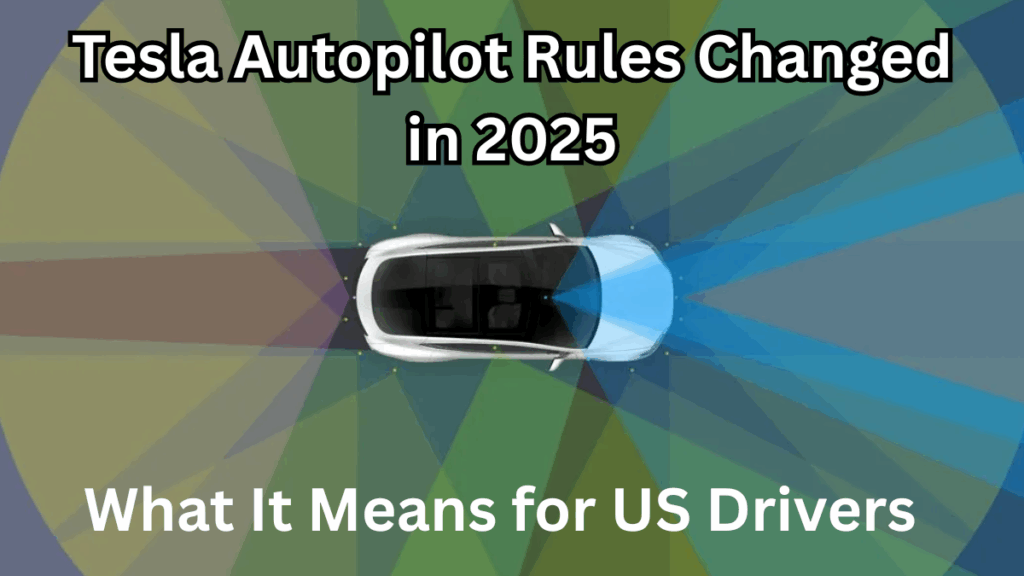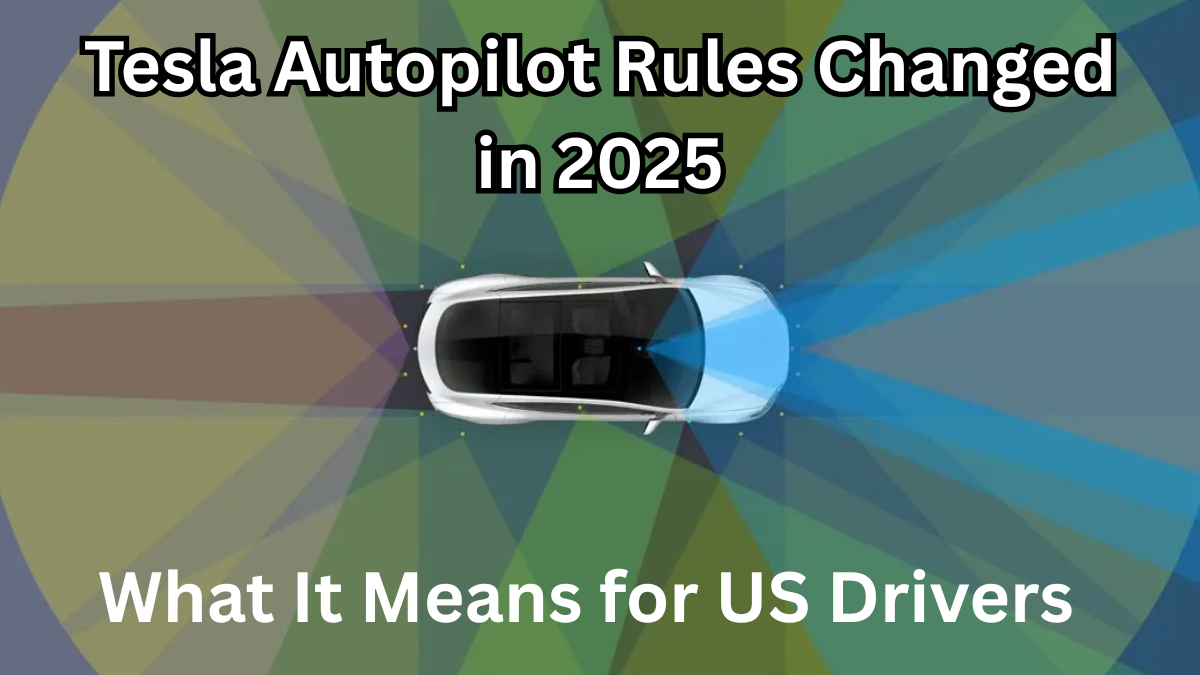Tesla drivers and self-driving tech enthusiasts across the US have a lot to digest in 2025. The Tesla Autopilot Regulation Update brings significant changes to how Tesla’s semi-autonomous system can be used on American roads. Whether you’re a Tesla owner or just following the evolving Tesla news USA, understanding these new rules is crucial.
Let’s break down what this means for drivers, the tech industry, and the future of self-driving cars under the latest self-driving law adjustments.

What’s New in the Tesla Autopilot Regulation Update?
Starting early 2025, the National Highway Traffic Safety Administration (NHTSA) and federal regulators have introduced stricter guidelines for Tesla’s Autopilot system usage. Here’s the gist:
-
Increased supervision: Drivers must keep their hands on the wheel and eyes on the road at all times.
-
Speed restrictions: Autopilot can no longer be used above certain highway speeds without manual override readiness.
-
Enhanced safety checks: Tesla must roll out mandatory software updates to detect driver attentiveness more effectively.
-
Data transparency: Tesla must share more driving data with regulators to help monitor Autopilot performance and safety.
Why Did Regulators Change the Tesla Autopilot Rules?
The update comes after a series of accidents linked to semi-autonomous driving features nationwide. Regulators want to:
-
Improve safety for all road users.
-
Clarify the legal responsibility of drivers when using Autopilot.
-
Ensure Tesla’s system operates as a driver-assist, not full self-driving technology.
These regulatory moves reflect growing concerns and public demand for accountability in self-driving law across the US.
How Does This Impact Tesla Drivers in the US?
For Tesla owners, these changes mean adapting to a more cautious approach while still enjoying the convenience of Autopilot. Here’s what drivers should expect:
| Key Change | What It Means for You |
|---|---|
| Hands-on Wheel Enforcement | No more extended hands-free driving sessions |
| Speed Limits for Autopilot | Autopilot limits activation above highway speeds |
| Mandatory Software Updates | Expect regular updates improving safety features |
| Increased Monitoring & Reporting | Tesla shares data with regulators for safety oversight |
What Tesla Owners Should Do Now
To stay compliant and safe, Tesla drivers should:
-
Always remain alert and ready to take control.
-
Update their Tesla software promptly when notified.
-
Review the owner’s manual for updated Autopilot guidelines.
-
Stay informed by following the latest Tesla news USA about future regulatory changes.
The Bigger Picture: What This Means for the Future of Self-Driving Cars
This Tesla Autopilot Regulation Update signals a critical turning point in US self-driving law:
-
Regulators are prioritizing safety without stifling innovation.
-
Tesla and other manufacturers will face increased oversight.
-
Drivers must recognize that current Autopilot is an assistive technology, not fully autonomous.
FAQs
Q1: Can Tesla owners still use Autopilot on highways under the new rules?
A: Yes, but with stricter speed limits and the requirement to keep hands on the wheel and eyes on the road at all times.
Q2: Will these changes affect Tesla Full Self-Driving (FSD) beta testers?
A: Yes, all Tesla drivers, including FSD testers, must adhere to updated safety protocols and software updates.
Q3: How does Tesla ensure drivers stay attentive during Autopilot use?
A: Tesla’s updated system now includes more sensitive driver monitoring features that detect hand pressure on the wheel and facial attention.
Q4: Where can I find the latest updates on Tesla’s self-driving regulations?
A: Following official Tesla news USA channels and government transport websites will keep you informed about ongoing regulation changes.
If you own a Tesla or follow Tesla news USA, understanding these new Autopilot rules is essential. The 2025 updates mark a major step toward safer roads and clearer legal standards around semi-autonomous driving. Stay alert, stay updated, and enjoy the future of driving responsibly!
Click here to learn more
